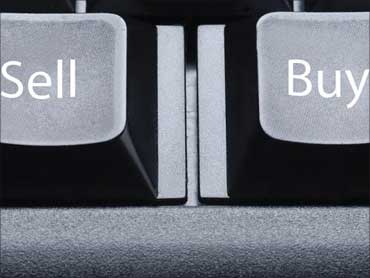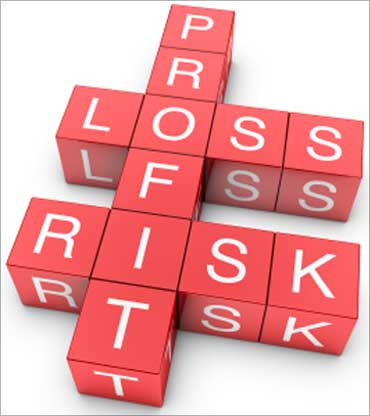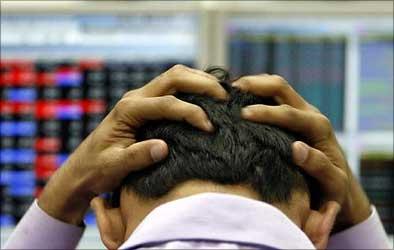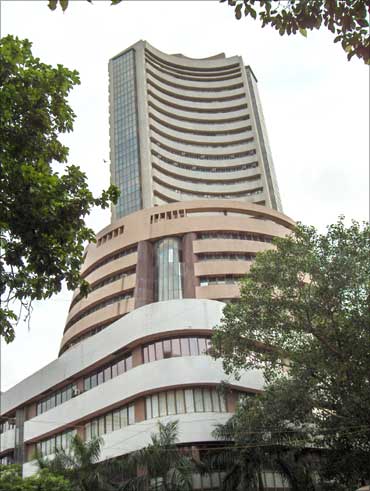
Evaluating a profitable trading day strategy is easier than you think. Here we discuss the 10 principles of successful day trading developed and refined over the years.
You should use these 'power' principles to evaluate your trading strategy. By checking a strategy against these principles, you can dramatically increase your chances of success.
1: Use few rules - make it easy to understand
It may surprise you that the best trading systems have less than ten rules. The more rules you have, the more likely that you've 'curve-fitted' your trading strategy to past data, and such an over-optimised system is very unlikely to produce profits in real markets.
It's important that your rules are easy to understand and execute. The markets can behave very wildly and move very fast, and you won't have time to calculate complicated formulas in order to make a trading decision.
Think about successful floor traders: the only tool they use is a calculator, and they make thousands of dollars every day.
...

2: Trade only electronic and liquid markets
I strongly recommend that you trade electronic markets, because commissions are lower and you receive instant fills.
You need to know as fast as possible if your order was filled and at what price, because you plan your exit based on this information.
You should never place an exit order before you know that your entry order is filled. When you trade open outcry markets (non-electronic), you might have to wait awhile before you receive your fill. By that time, the market might have already turned and your profitable trade has turned into a loss!
When trading electronic markets, you receive your fills in less than one second and can immediately place your exit orders. Trading liquid markets means you can avoid slippage, which will save you money.
Fortunately, more and more markets are now traded electronically.
...

3: Have realistic expectations
Losses are part of the business of day trading. A trading system that doesn't have losses is 'too good to be true'.
Recently, I ran into a trading system with a whopping winning percentage of 91 per cent and a drawdown of less than $500.
When I looked at the details, though, it turned out that the system was only tested on 87 trades and - of course - it was curve-fitted. If you run across a trading system with numbers too good to be true, then it's probably exactly that: too good to be true.
Usually you can expect the following from a robust trading system:
Use these numbers as a rough guideline, and you'll easily identify curve-fitted systems.
...

4: Maintain a healthy balance between risk and reward
Let me give you an example: if you go to a casino and bet everything you have on 'red', then you have a 49 per cent chance of doubling your money and a 51 per cent chance of losing everything.
The same applies to trading: you can make a lot of money if you're risking a lot, but if you do, the risk of ruin is also high. You need to find a healthy balance between risk and reward.
Make sure your trading strategy is using small stop losses and that your profit targets are bigger than your stop losses.
Stay away from strategies that have a small profit target of only $100 and a stop loss of $2,000. Sure, the winning percentage will be fantastic, but 2-3 losses in a row can wipe out your trading account.
The perfect balance between risk and reward is 1:1.5 or more - i.e. for every dollar you risk you should be able to make at least $1.50.
In other words, if you apply a stop loss of $100, your profit target should be at least $150.
...

5: Find a system that produces at least five trades per week
The higher your trading frequency, the smaller your chances of having a losing month.
If you have a trading strategy that has a winning percentage of 70 per cent, but only produces one trade per month, then one loser is enough to have a losing month. In this example, you could have several losing months in a row before you finally start making profits.
In the meantime, how do you pay your bills?
If your trading strategy produces five trades per week, then you have on average 20 trades per month. If you have a winning percentage of 70 per cent, then your chances of a winning month are extremely high.
And that's the goal of all traders: having as many winning months as possible!
...

6: Start small - grow big
Your trading system should allow you to start small and grow big. A good trading system allows you to start with one or two contracts, increasing your position as your trading account grows.
This is in contrast to many 'martingale' trading systems, which require increasing position sizes when you are in a losing streak.
You've probably heard about this strategy: double your contracts every time you lose, and one winner will win back all the money you previously lost.
It's not unusual to have 4-5 losing trades in a row; an atypical negative trading run can and will happen. This is why doubling up after each loss is not recommended. If we trade in a disciplined, systematic manner, then when our atypical run does occur, we will still be in the game at the end of it.
Regardless of the strategy or method you use to trade, there will be occasions when you have losses, or even a string of losses. When these occur, it's important to have faith in your trading plan; don't try to double up your trades to 'catch up' on your wins.
The main point here is that every trading system you find will go through times when it has more losses than wins.
This is to be expected, and it's where effective money management comes into play.
...

7: Automate your exits
Emotions and human errors are the most common mistakes that traders make. You have to avoid these mistakes by any means necessary, especially when the market starts to move fast.
You might experience panic and indecision, but if you give in to those emotions, you'll suffer a much greater loss than you had originally planned for.
Your exit points should be easy to determine. The best solution for your exit points is the use of 'bracket orders'. Most trading platforms offer bracket orders, which allow you to attach a profit target and a stop loss to your entry.
This way, you can put your trade on autopilot, and the trading system will close your position at the specified levels.
Of course, this assumes that you have easy exit rules. A stop loss of $100, or one per cent, of the entry price can easily be specified in today's trading platforms.
Exit rules like '2/3 of the average true range of the past 5 trading days' are more complex to automate. In the beginning, you should keep your trading as simple as possible.
If you can't make money with simple entry and exit points, you won't be able to make money with more complex trading rules.
Think about driving a car: if you can't drive a Ford, you definitely won't be able to drive a Ferrari.
...

8: Have a high percentage of winning trades
Your trading strategy should produce more winners than 50 per cent. There's no doubt that trading strategies with smaller winning percentages can be profitable, too, but the psychological pressure is enormous.
Taking 7 losers out of 10 trades, and not doubting that system, takes a great deal of discipline, and many traders can't stand the pressure.
After the sixth loser, they'll start 'improving' the strategy, or stop trading it completely.
It's very helpful for beginning or novice traders to gain confidence in their trading, and if your strategy gives you a high winning percentage, let's say more than 65 per cent, your confidence will definitely be on the rise.
...

9: Test your strategy on at least 200 trades
The more trades you use in your back-testing (without curve-fitting), the higher the probability that your trading strategy will succeed in the future.
The more trades you have in your back-testing, the smaller the margin of error, and the higher the probability of producing profits in the future.
You need at least 40 trades for a valid performance report. As you can see from the table above, 200 trades are optimal, since the margin of error decreases fast from 14 per cent to 7 per cent with only an addition 150 trades.
If you test your system on more than 200 trades, the margin of error decreases at a slower rate. The next 100 trades only increase the confidence by 2 per cent.
...

10: Choose a valid back-testing period
I recently saw the following ad:
"Since 1994, I've taught thousands of traders worldwide a simple and reliable E-mini trading methodology."
That's a very interesting claim...
In the US the E-mini S&P was introduced in September of 1997, and the E-mini Nasdaq was introduced in June of 1999; therefore, NONE of these contracts existed before 1997.
Regardless, though, we only have to worry about the age of the contracts for back-testing purposes. And, if you develop an E-mini S&P trading strategy, for example, then you should only back-test it for the past 3-4 years anyway.
This is because, even though the contract has existed since 1997, there was practically nobody trading it in its earlier days.
Also, when futures contracts start trading electronically, they attract a different kind of trader than their pit-traded counterparts; therefore, the characteristics of the two markets can be very, very different.
It would be foolish to think that the markets remain the same once they can be electronically traded. Faster fills and lower commissions allow a different kind of trading strategy, and the markets WILL behave differently than during the times when only pit traders traded them.
(Excerpted from the book, The Complete Guide to Day Trading by Markus Heitkoetter. Published by Vision Books.)
(C) All rights reserved